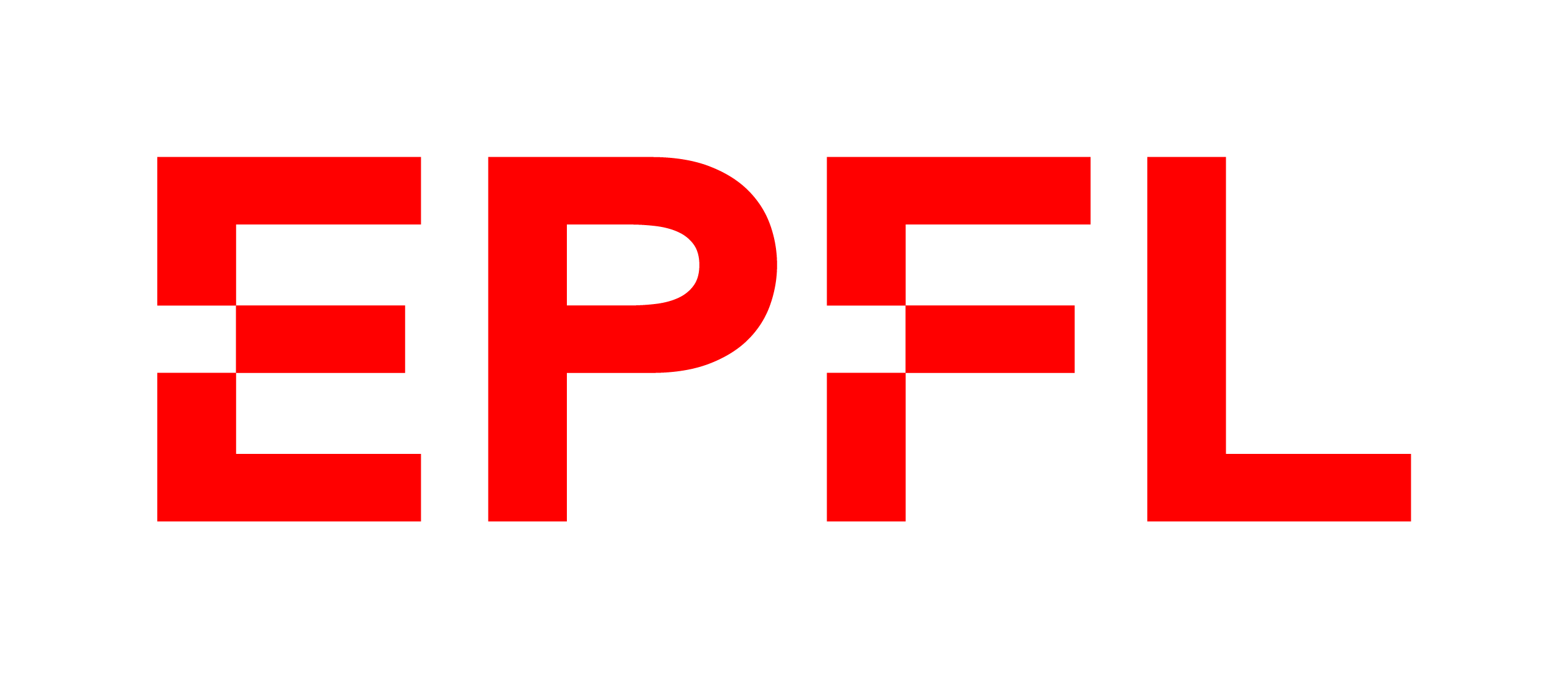Visual Intelligence and Learning Laboratory (VILAB)
We are a research group at the Swiss Federal Institute of Technology (EPFL)'s School of Computer and Communication Sciences (IC). Our research focus is broadly on Computer Vision, Machine Learning, and Perception-for-Robotics.
Group Members
- PI: Prof. Amir Zamir
- Lab Manager: Stephanie Baillargues
- PhD Students:
- Scientists:
- Interns/Undergraduate/Master's Students:
- Former PhD Students:
- Alexander (Sasha) Sax (co-advised with Jitendra Malik)
- Teresa Yeo
- Former Members:
- David Mizrahi
- Artem Zholus
- Sogand Salehi (Summer@EPFL intern, 2023)
- Isabella Yu (Summer@EPFL intern, 2023)
- Ruchira Ray (Summer@EPFL intern, 2023)
- Hosna Oyarhoseini (Summer@EPFL intern, 2023)
- Pooya Esmaeil Akhoondi (Summer@EPFL intern, 2023)
- Liangze Jiang
- Mohammad Mohammadi (Summer@EPFL intern, 2022)
- Paulina Tomaszewska (Summer@EPFL intern, 2022)
- Zahra Sodagar (Summer@EPFL intern, 2022)
- Andrey Filatov
- Marius Memmel
- Ozgur Kara (Summer@EPFL intern, 2022)
- Qianyi Xu (Summer@EPFL intern, 2022)
- Jessica Bo (Summer@EPFL intern, 2021)
- Yael Vinker (Summer@EPFL intern, 2021)
- Ainaz Eftekhar (Summer@EPFL intern, 2021)
- Abhijeet Jagdev (Summer@EPFL intern, 2021)
- Shijian Xu
- Namrata Deka (Summer@EPFL intern, 2021)
- Louis Amaudruz
- Stefan Stepanovic (Summer@EPFL intern, 2021)
Current Teaching
- CS-503 Visual Intelligence: Machines and Minds, Fall 2021, Spring 2023, 2024, 2025.
- CS-500: AI Product Management, Fall 2023, 2024.
- ENG-615: Topics in Autonomous Robotics, Spring 2021, 2023.
- COM-304: Robotics Project, Spring 2024, 2025.
Highlighted Recent Projects
4M-21: An Any-to-Any Vision Model for Tens of Tasks and Modalities R. Bachmann*, O.F. Kar*, D. Mizrahi*, A. Garjani, M. Gao, D. Griffiths, J. Hu, A. Dehghan, A. Zamir NeurIPS, 2024.
Solving Vision Tasks using Simple Photoreceptors instead of Cameras A. Atanov*, J. Fu*, R. Singh*, I. Yu, A. Spielberg, A. Zamir ECCV, 2024.
ViPer: Visual Personalization of Generative Models via Individual Preference Learning S. Salehi, M. Shafiei, T. Yeo, R. Bachmann, A. Zamir ECCV, 2024.
BRAVE: Broadening the visual encoding of vision-language models O.F. Kar, A. Tonioni, P. Poklukar, A. Kulshrestha, A. Zamir, F. Tombari ECCV, 2024. [Oral]
Unraveling the Key Components of OOD Generalization via Diversification H. Benoit*, L. Jiang*, A. Atanov*, O.F. Kar, M. Rigotti, A. Zamir ICLR, 2024.
4M: Massively Multimodal Masked Modeling D. Mizrahi*, R. Bachmann*, O.F. Kar, T. Yeo, M. Gao, A. Dehghan, A. Zamir NeurIPS, 2023. [Spotlight]
Rapid Network Adaptation: Learning to Adapt Neural Networks Using Test-Time Feedback T. Yeo, O.F. Kar, Z. Sodagar, A. Zamir ICCV, 2023.
Modality-invariant Visual Odometry for Embodied Navigation M. Memmel, R. Bachmann, A. Zamir CVPR, 2023.
Task Discovery: Finding the Tasks that Neural Networks Generalize on A. Atanov, A. Filatov, T. Yeo, A. Sohmshetty, A. Zamir NeurIPS, 2022.
PALMER: Perception-Action Loop with Memory Reorganization for Planning O. Beker, M. Mohammadi, A. Zamir NeurIPS, 2022.
MultiMAE: Multi-modal Multi-task Masked Autoencoders R. Bachmann*, D. Mizrahi*, A. Atanov, A. Zamir ECCV, 2022.
3D Common Corruptions and Data Augmentation O.F. Kar, T. Yeo, A. Atanov, A. Zamir CVPR, 2022. [Oral]
CLIPasso: Semantically-Aware Object Sketching Y. Vinker, E. Pajouheshgar, J. Y. Bo, R. Bachmann, A. H. Bermano, D. Cohen-Or, A. Zamir, A. Shamir Transactions on Graphics (Proceedings of SIGGRAPH), 2022. [Best Paper Award]
Robustness via Cross-Domain Ensembles T. Yeo*, O.F. Kar*, A. Zamir ICCV, 2021. [Oral]
Omnidata: A Scalable Pipeline for Making Multi-Task Mid-Level Vision Datasets from 3D Scans A. Eftekhar*, A. Sax*, R. Bachmann, J. Malik, A. Zamir ICCV, 2021.
Robust Learning Through Cross-Task Consistency A. Zamir*, A. Sax*, T. Yeo, O. Kar, N. Cheerla, R. Suri, J. Cao, J. Malik, L. Guibas CVPR, 2020. [Best Paper Award Nominee]
Which Tasks Should Be Learned Together in Multi-task Learning? T. Standley, A. Zamir, D. Chen, L. Guibas, J. Malik, S. Savarese ICML, 2020.
Side-tuning: Network Adaptation via Additive Side Networks J. Zhang, A. Sax, A. Zamir, L. Guibas, J. Malik ECCV, 2020. [Spotlight]
Robust Policies via Mid-Level Visual Representations: An Experimental Study in Manipulation and Navigation B. Chen, S. Sax, L. Pinto, F. Lewis, I. Armeni, S. Savarese, A. Zamir, J. Malik CoRL, 2020.
Prospective Members:
- PhD Applicants: We are always looking for highly talented and motivated students. However, you don't need to send an email first. PhD admissions at EPFL are centralized and competitive. Please directly apply to the PhD program of computer science (EDIC). The admission system allows you to identify the professors/labs you're interested in. If you believe your case is a unique fit for our lab, please send an email with your CV as well, after you submit your application.
- Postdocs: Please email Amir directly.
- BS/MS interns and project students: If you're an EPFL student, please fill out this form. We will reach out to you if there is a fit.
- For people outside EPFL, we recommend applying to the Summer@EPFL internship program, if eligible. Otherwise, feel free to fill this form.
Contacts
- PI: Amir Zamir
- Administrative: Stephanie Baillargues
- Address: INJ 230,231,232,234,211, School of Computer and Communication Sciences [map]


